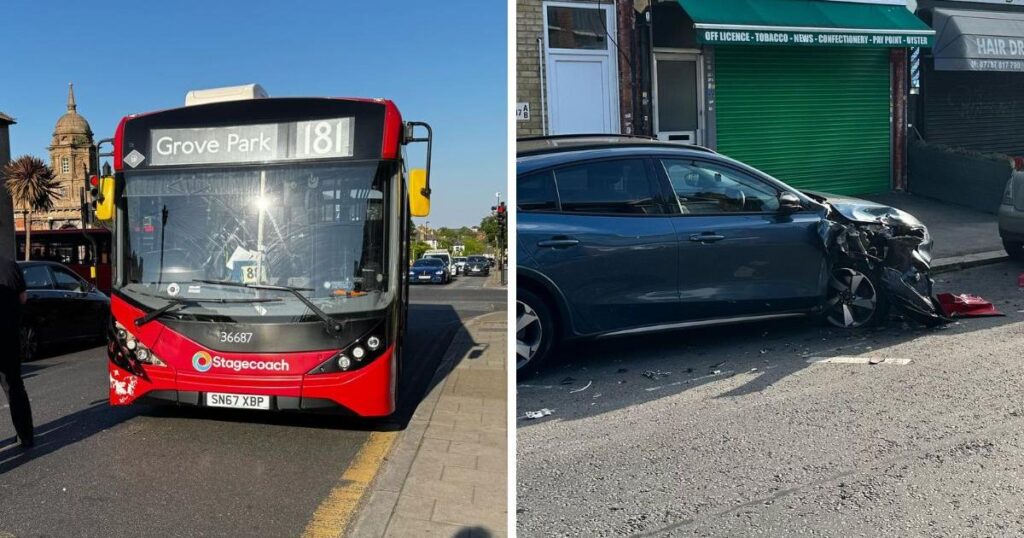Alison Howard, who lives in Sandhurst Road, said she was worried somebody would eventually be killed if Transport for London (TfL) bus services did not slow down.
Freedom of Information (FoI) data suggests that there have been more than 17,000 incidents of speeding buses in the street since 2021, some of which may have been travelling at more than double the 20mph speed limit.
TfL also confirmed that there have been 85 crashes involving buses over the last four years. This data includes crashes in neighbouring Sangley Road which shares the same bus routes.
The stretch currently supports four bus routes in each direction, as well as a night service, meaning it’s a common occurrence for buses to thunder past homes throughout the day and night.
Pictures shared with the News Shopper by Safer Sandhurst & Sangley campaign group appear to show that multiple cars and buses have been damaged in the crashes.
Neighbours have asked TfL to reroute bus services (Image: Safer Sandhurst & Sangley)
“It’s an insane number of buses speeding and they routinely hit cars,” Ms Howard said.
“Someone is eventually going to get killed because there’s not great visibility on the road because there’s cars on either side.
“We’re not allowed to have dropped kerbs in front of our houses anymore so there’s not really any option to park your car elsewhere.
“You just have to risk the consequences if you choose to park your car near your house.”
In total, 3,700 buses pass along the two streets every day.
According to TfL, one incident in September 2022 resulted in an injury, but all other crashes were damage-only.
It also said that the speeding data comes from iBus technology which can be impacted by GPS tracking errors or vehicle faults and is used only for general monitoring purposes.
“An additional set of data which measures speed of buses more precisely is used by bus operators,” Philip Gerhardt, TfL’s Head of Bus Performance, said.
According to TfL, operator Stagecoach has found that this data suggests that the amount of speeding incident has “significantly” reduced, and that only a “small number” of breaches were recorded in April.
Mr Gerhardt added: “We continue to work with bus operators to ensure that appropriate action is taken against any driver found to be breaking the speed limit.”
Local people have also raised concerns that heavy buses shake the Victorian houses in the area when they drive over speed bumps in the road.
One mum previously told the News Shopper that these vibrations felt like a “mini earthquake” and had caused cracks in her walls.
Ms Howard added: “The speedbumps clearly aren’t really doing their job in terms of slowing the traffic.
“We have asked Lewisham Council for a chicane instead but ideally we want the bus services rerouted.”
She suggested that Brownhill Road, a main road that runs parallel to her street, would be better suited for the bus routes, especially the 160 which uses heavy electric double-deckers.
TfL claimed it had previously investigated “all possible options” for the two streets, including alternative route options.
But it said it had not pressed ahead with changes after deciding that these would result in a “significant worsening” of bus services for a large number of passengers in the wider area.
Lewisham Council has been approached for a response.




